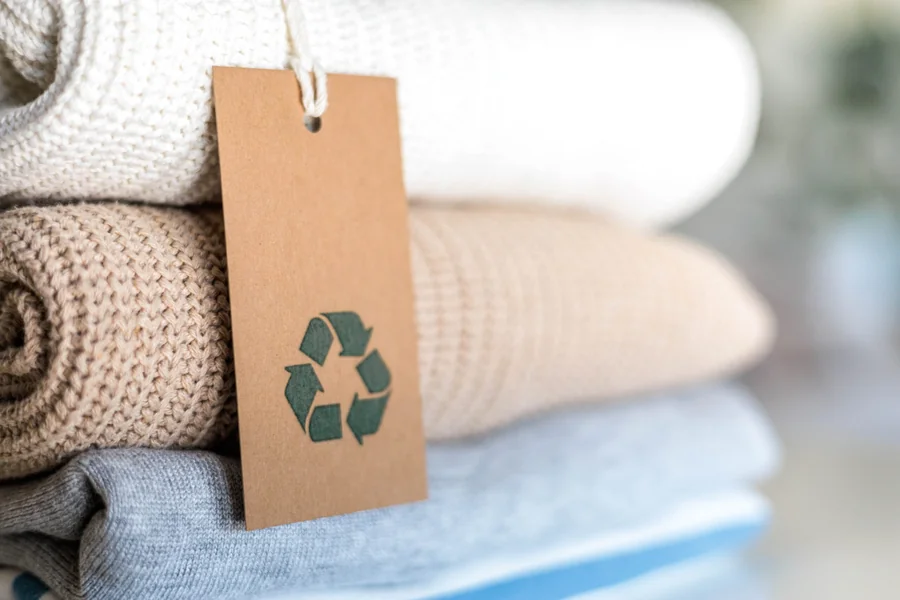How to Care for Your Eco-Friendly Clothes Properly

Lately, more and more people are choosing eco-friendly clothing because they care more about protecting the environment. Organic, recycled or biodegradable clothes are friendlier to the environment than the clothes in traditional fashion. Yet, to get the most from their shelf life and keep them in good shape, look after them correctly. Caring for eco-friendly clothes correctly not only preserves their durability but also honors the very principles of sustainability by reducing waste and minimizing resource consumption. In this section, we explain the ins and outs of looking after your wardrobe, so that it stays attractive and works well for years.
Washing Eco-Friendly Clothes
Choosing the right process to wash eco-friendly clothing is one of the key points. Generally, many eco-friendly fabrics are more delicate than most traditional materials. When it is possible, choose to wash your clothes with cold water. Washing with cold water helps fabrics stay strong, stops colors from disappearing and conserves energy which is environmentally kind. It is necessary to buy “green” detergents that break down easily and keep out harmful ingredients like phosphates, synthetic scents and chlorine. Using such delicate cleaners maintains your clothes’ condition and does not hurt water quality.
Set your washing machine to use a gentle or delicate cycle on materials that might be delicate. When the garment is delicate, always use mild detergent for hand washing. To keep your clothes from wearing out too quickly, only wash them when really required and use airing out or spot-cleaning for tiny stains instead.
Drying and Storing to Preserve Fabric Quality
Drying practices play a critical role in maintaining eco-friendly clothes. Hang or lay out your laundry so that air drying it is the most sustainable way to dry your clothes. Sunlight should not be allowed to directly dry your clothes, because it may cause the colors to fade and the threads to degrade. Whenever using a dryer, always choose a low heat setting which protects your clothes and saves on your energy bill.
Storing clothes correctly extends their life. The best way to stop moisture from building up and causing mold is to put your clothes in areas that are cool, dry and well ventilated. Plastic baggies or closed containers hold in moisture which may ruin fine clothes, so choose cotton garment bags or boxes that are lined with tissue paper. Folding rather than hanging thick knits or delicate stuff stops them from getting out of shape or damaged.
Handling Stains and Repairs Sustainably
When it comes to stains, prompt and careful treatment is essential. Use cold water and gentle blotting to address fresh stains, avoiding harsh scrubbing that can harm fibers. Natural stain removers such as baking soda, white vinegar, lemon juice, or castile soap provide effective and eco-friendly solutions without introducing harmful chemicals.
Repairing your eco-friendly clothes extends their life and aligns with sustainability goals. Simple sewing to fix loose seams or small tears can prevent minor damage from worsening. Creative upcycling, such as adding patches or redesigning garments, not only saves clothing from landfill but also personalizes your wardrobe.
Avoiding Common Care Mistakes
Many common laundry habits inadvertently damage eco-friendly clothing. Avoid fabric softeners, which coat fibers and reduce breathability, undermining the qualities of natural fabrics. Don’t wash eco-friendly clothes with abrasive items like denim or towels, as friction can cause pilling and fiber breakage. Always follow care labels carefully; these provide valuable guidance tailored to the fabric’s needs. Lastly, avoid overloading washing machines, which reduces cleaning effectiveness and increases mechanical stress on clothes.
The Environmental Impact
When garments are maintained well, it becomes unnecessary to purchase them too often which lowers waste, saves resources and helps the environment. If you use gentle washing, allow your clothes to dry in the air and put them in a dry spot, you will use less of both water and energy. Picking biodegradable washing powder and stain removers helps stop pollution. Mending and upcycling items supports the cycle of longevity in fashion, reducing waste.
Taking these deliberate steps ensures your eco-friendly clothes remain a meaningful investment—both in your wardrobe and in the health of the planet.
FAQs
Can I wash eco-friendly clothes with other laundry?
Yes, but it is best to separate delicate eco-friendly fabrics and use gentle cycles with cold water and mild, eco-friendly detergents.
How often should I wash organic cotton garments?
Wash only when necessary to avoid wear. Airing out and spot-cleaning can extend time between washes.
Are eco-friendly fabrics biodegradable?
Many natural fibers like organic cotton, hemp, and wool are biodegradable, but proper disposal or donation is preferred to landfill.
Is ironing safe for eco-friendly clothes?
Use low heat and a pressing cloth to avoid damage, especially on delicate fabrics.
What do I do if eco-friendly clothes shrink?
Prevent shrinkage by cold washing and air drying. Gently stretch damp garments to regain shape if needed.








